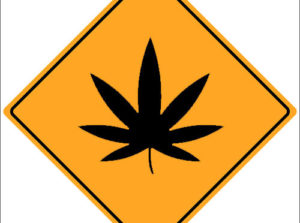 This provides guidance to help dispensary managers and cannabis business owners identify hazards in the dispensary workplace and communicate with workers about hazards in their jobs, by conducting safety walkarounds.
This provides guidance to help dispensary managers and cannabis business owners identify hazards in the dispensary workplace and communicate with workers about hazards in their jobs, by conducting safety walkarounds.
There are at least two reasons why dispensary managers and owners should periodically conduct workplace inspections themselves. First, inspections demonstrate management’s commitment to improving safety and health by finding and fixing hazards.
Second, walkarounds let dispensary managers see for themselves how the safety and health program is working and whether it is effective in identifying and eliminating hazards. Safety walkarounds can also help managers and owners assess how key elements of the safety program are working.
For example, how engaged are employees in the program? Do employees feel they have received appropriate training? Do they know how to report a safety or health incident or concern?
Pre-Inspection Dispensary Activities
Preparation is important before starting an inspection. Take the time to familiarize yourself with the dispensary workplace and operations and the hazards that have been previously identified. Pre-inspection activities might include:
- Identify the most hazardous areas by examining past inspection reports, injury and workers’ compensation records, incident investigation reports, and recent near-miss incidents. Plan to focus your inspections on areas where hazards have been identified and check to see if previously-identified hazards have been abated or if further action is needed.
- Talk to workplace safety representatives and other managers or supervisors about their safety observations and concerns.
- Meet with the committee (if the workplace has a safety committee) before the inspection to get their perspective on the most important safety issues.
- Determine what safety equipment you will need to conduct the inspection (it is important to lead by example, and wearing the right personal protective equipment [PPE] sets a good example).
- Practice wearing the PPE to make sure you know how to put it on properly, and that it fits.
- Consider taking the same hazard identification safety training taken by budtenders, dispensary managers, or the safety committee.
On-Site Inspection Activities
When onsite, make sure you are wearing the right PPE for each area you enter. Nothing takes away credibility faster than having the wrong PPE, or not wearing it properly. Be safe; don’t expose yourself to hazards during an inspection. Limit the size of the inspection group. Large groups tend to stifle open communication with dispensary employees.

Look for easily observable hazards first, such as:
- Tripping hazards
- Blocked exits
- Frayed/exposed electrical wires
- Missing machine guards
- Poor housekeeping
- Poorly maintained equipment
Look for property damage, such as walls or doors damaged by equipment or forklift traffic. Such damage may indicate a potential for future worker injuries.
Talk to dispensary workers at their workstations. Workers are likely to know the most about the hazards and safety issues in their jobs. Tap into that knowledge. Make them comfortable talking with you. Assure them that you are interested in finding problems and fixing them, i.e., improving safety, and not blaming anyone for your findings.
Avoid yes/no questions. Encourage conversation. Ask open-ended questions such as:
- What is the most hazardous task in your job? What do you recommend to eliminate those hazards?
- If you have been injured in your job, what was the injury and how did it happen? What was done to make your job safer?
- How would you report an injury, hazard, or near miss?
Seek out and talk to the most recently-hired workers to get their perspective on safety. These “fresh eyes” could have valuable insights. Observe workers as they perform their job. For example, do they lift heavy objects? Do they stand/sit in awkward postures? Are they performing repetitive motions? If so, take notes and photos.
If their job involves handling chemicals or exposure to excessive noise and/or heat, a more detailed evaluation by a safety professional may be in order. Try to find solutions for hazards while you are inspecting by applying your creativity and inspiring the creativity of dispensary workers.
Finding solutions “on the spot” demonstrates your commitment to making the workplace safer. Before completing the dispensary inspection, make a list of hazards that need to be addressed and prioritize them according to
the severity of the potential injuries that might occur as a result of workers being exposed to the hazards.
Post-Inspection Activities

Post-inspection follow-up is important to establish your credibility as a manager who is committed to improving safety. Failure to follow up can often stifle worker participation and enthusiasm, which can be hard to regain. Very soon after your inspection, prepare an abatement plan containing a list of the hazards found, corrective actions needed, and a reasonable timeline for implementation.
Some complex hazards may require further evaluation, study, or engineering work to design and implement appropriate controls. Describe briefly how the hazards will be addressed and identify interim controls that will be used while more permanent measures are developed.
Share the abatement plan with dispensary managers, supervisors, and workers as a way of showing your commitment to fixing the safety issues found during your inspection. Track progress by sharing or posting periodic updates to the plan. Ensure all corrective actions are implemented in a timely fashion.
Let us know what you think.




Responses